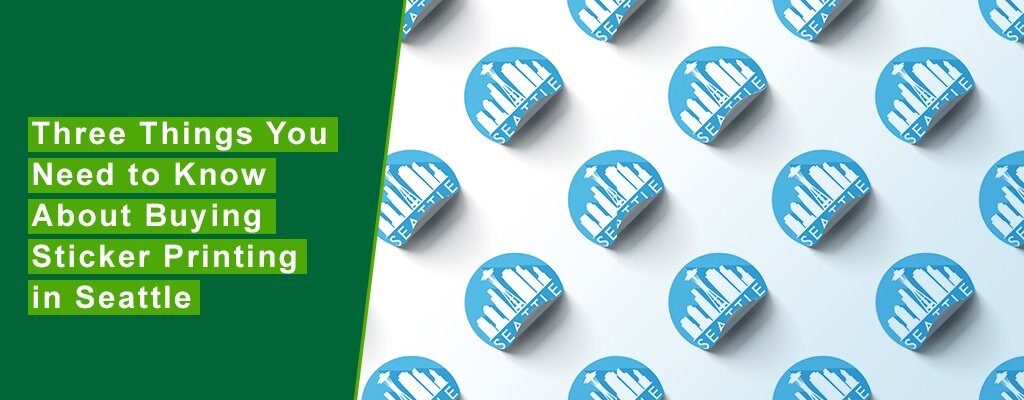3 Things You Need to Know About Buying Printed Stickers
Contents
There are several key reasons why you may want to buy sticker printing in metro areas like Seattle and Portland. Vinyl stickers make attention-grabbing warnings, attract consumers to in-store sales, and give employers an easy way to recognize top performers in the office.
Stickers and labels offer an easy, affordable way to get a broad range of messages across. But not all stickers are created equal, and not all stickers offer equal value.
When it comes to high-volume sticker orders, businesses tend to look for the cheapest possible option. While on the surface this makes sense, it does not faithfully represent the value that high-quality stickers can provide to businesses, their employees, and their customers.
As with most important decisions in the business landscape, stickers offer more than meets the eye. Learn more about the value of sticker labeling and how the choices you make when purchasing sticker printing services can affect the overall outcome of your business.
What You Need to Know About Sticker Printing
On the surface, stickers seem like an ideal place to cut costs. Many companies give stickers away or replace them frequently enough to make choosing the cheapest possible option viable.
But choosing the right stickers can help you communicate value to customers and employees. Look out for the following things when thinking about printing stickers.
1. The Right Material Makes a World of Difference
Most commercial stickers are either paper or vinyl. Paper is the less expensive option of the two, but it is also less durable. A paper sticker can wear out in as little as a few days – which presents a branding problem.
For the most part, stickers help companies extend their brand – it allows both employees and customers to attach brand imagery to nearly anything. If that imagery looks faded, peeled, or blistered, then everyone who sees the image will associate that image with your brand.
In situations when stickers don’t perform brand-related messaging, such as warning signs, it is even more important that the image remain clear and legible for as long as possible. The quality of the sticker directly impacts its legibility and durability.
Paper stickers are most peoples’ go-to materials for one-time applications like shipping labels. In this case, a plastic sheath protects the paper from damage. In nearly any other circumstance, vinyl stickers perform better.
2. A Bad Sticker Printer Can Ruin and Entire Run
It’s easy to talk about sticker quality as being the result of simple choices like the materials used, but more subtle choices can have wide-ranging effects on the result. For example, the type of printer your reprographics studio uses to create stickers can determine the success or failure of an entire run.
Sticker printers don’t often get the attention they deserve because most businesses simply trust their usual print providers to make good stickers. If a company’s print provider usually does a good job printing documents and signs, then in theory it should do just as good a job with stickers.
However, this isn’t always true. The process of making a high-quality vinyl sticker that will last for years requires powerful reprographic printing capacity like you’ll find at Kelley Create.
There is also a distinct difference between vinyl signs, polypropylene-based blueprints, and vinyl stickers, and your print provider needs to have the appropriate reprographic printer for the job.
3. Adhesive Quality is Paramount
Without the proper adhesive, even the best-looking sticker is essentially worthless. The trouble with adhesives is that they offer differing levels of stickiness depending on the material and texture of the substrate – the object you’re putting stickers on.
At this point, determining the ideal quality of an adhesive depends on your long-term intentions. The key differentiator in adhesive performance is tack, which refers to how sticky the adhesive is over time. A permanent sticker needs high long-term tack, whereas a removable sticker should have low long-term tack, but a high-enough initial tack for the sticker to adhere in the first place.
Different surfaces offer different levels of stickiness. Glass is a very common surface that works well with a variety of adhesives. Wood, on the other hand, causes problems for all but the most advanced sticker printing providers.
Materials, Printing Hardware, and Adhesives
The three most important quality concerns for sticker printing touch on all the things that make stickers unique. Durable vinyl stickers printed on quality equipment and given sophisticated adhesive properties will outlast and outperform cheaper stickers.
Taking care to choose the right stickers ensures that your brand remains associated with quality and durability in the eyes of consumers.



